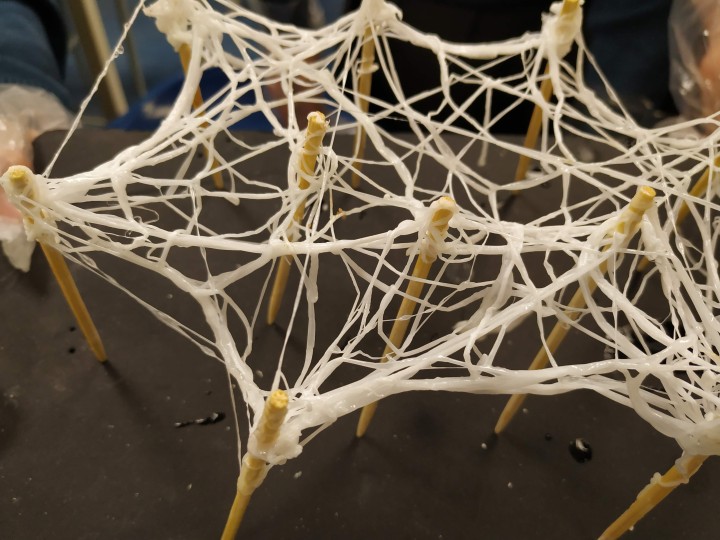The rayon fibres I produced in one of the earlier sessions of the EEB(C) Society certainly could not compete with the natural silks produced by spiders, however they were strong enough to stretch and manipulate- which allowed us to test spider web arrangements with our own synthetic silk.

The winning design
As part of a mini-competition, attendees designed their own webs based on web arrangements we discussed earlier in the term and prototyped their designs with a metre of twine. The most successful design, which was able to withstand the weight of a sea glass pebble, took inspiration from the tightly coiled form of the funnel web and the spiralling nature of the orb web.
Translating these prototypes into an actual web spun from rayon fibres turned out to be a little trickier. The rayon fibre easily broke and could not endure much tensile stress…
We then created nylon from 1,6-diaminohexane and sebacoyl chloride – this polymer, with its high plasticity, proved to be much more successful for web building. The very instant that the sebacoyl chloride was gently poured over the 1,6-diaminohexane, a nebulous layer of nylon formed at the interface.
The Year 7 students delighted in constructing a (surprisingly strong) tangle web from the nylon we synthesised; this artificial web was able to capture and withstand the weight of two tweezers and a glass stirring rod.

Some of these webs are not exactly fit for a spider, but creating them was definitely an exciting way to end this half-term’s EE(B)C sessions on polymers.











